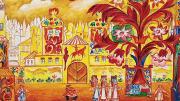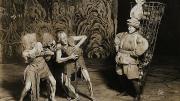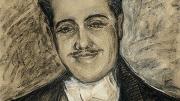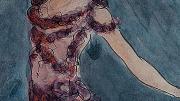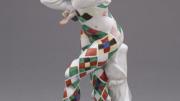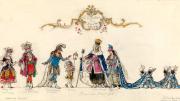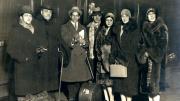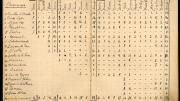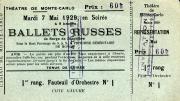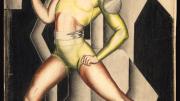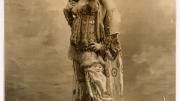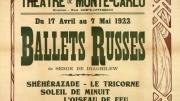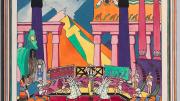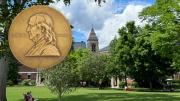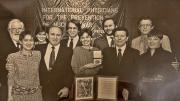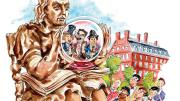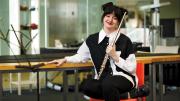The culturati of Europe in the early twentieth century had a phrase for “cutting edge” developments: “That’s very Ballets Russes.” Indeed, the Ballets Russes, founded and run by the legendary Russian impresario Sergei Diaghilev (1872-1929), were a fountain of energy that launched many of the century’s creative icons. Igor Stravinsky, for example, was not well known when Diaghilev commissioned The Firebird in 1910; Petrouchka followed in 1911, and The Rite of Spring’s 1913 Paris premiere triggered an artistic riot that made both the composer and the ballet famous. Even Pablo Picasso’s reputation grew when Diaghilev engaged him to design Parade (1917), with music by Erik Satie and a scenario by Jean Cocteau.
Vaslav Nijinsky and, less frequently, Anna Pavlova danced for the Ballets Russes; Michel Fokine was the most prominent choreographer. At the center was Diaghilev, “a man of great taste and discernment, as well as personal persuasiveness,” says Fredric Woodbridge Wilson, curator of the Harvard Theatre Collection in Houghton Library. “He was an adventurer who sought out novelty, and delighted in revealing new artists. There was perhaps never quite a parallel circumstance in the history of the arts in which the tastes and personal influence of one person had such an effect on the future of the world of art.”
This enchanted age of dance is the focus of a centennial exhibition by the Theatre Collection, Diaghilev’s Ballets Russes, 1909-1929: Twenty Years That Changed the World of Art, opening on April 16 and scheduled to run through August 28 in Pusey Library. The collection, assembled across decades, ranks among the world’s great centers for studying the Ballets Russes, and will have many unique items on display, like an autograph letter from Picasso to Diaghilev regarding Parade.
In mid April, the Theatre Collection and the Office for the Arts are set to convene more than three dozen speakers for a three-day symposium, including New Yorker dance writer Joan Acocella, Diaghilev biographer Joy Melville of London, and Toni Bentley of Los Angeles, an author and former Balanchine dancer who will discuss Ida Rubinstein, the wealthy, beautiful ballerina who broke from Diaghilev to found her own company. (She commissioned and danced Maurice Ravel’s Boléro in 1928.)
Concurrently, the Harvard Dance Center plans to present Dancers’ Viewpointe 9, including scenes from The Rite of Spring newly choreographed by Jaime Blanc of Mexico, and Harvard radio station WHRB expects to air several programs of music associated with Ballets Russes productions. Meanwhile, the nonprofit Brattle Theatre in Harvard Square is set to screen three days' worth of ballet films, including a new Finnish movie, My Madness Is My Love: Impressions of Vaslav Nijinsky; the 1948 Hollywood classic The Red Shoes; and The Mad Genius, a 1931 movie starring John Barrymore, with ballet scenes and characters transparently based on Diaghilev and his circle.
